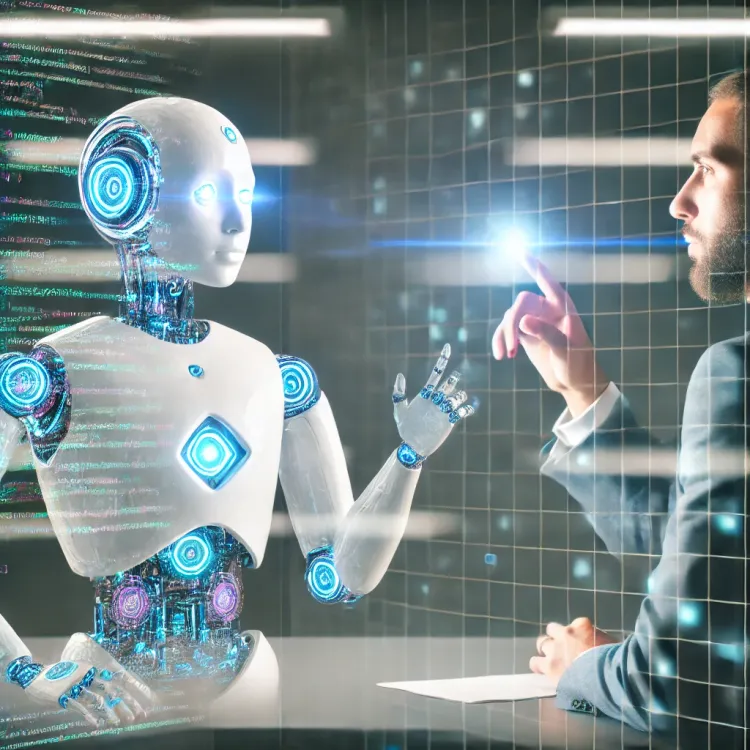Computer Vision for Medical Imaging: Revolutionizing Healthcare Diagnostics

In recent years, the healthcare industry has witnessed a technological revolution, with artificial intelligence (AI) playing a pivotal role. One of the most promising applications of AI in healthcare is computer vision for medical imaging. This cutting-edge technology is transforming how medical professionals diagnose and treat patients, offering unprecedented accuracy and efficiency in image analysis.
What is Computer Vision in Medical Imaging?
Computer vision in medical imaging involves using AI algorithms and machine learning techniques to analyze and interpret medical images such as X-rays, MRIs, CT scans, and ultrasounds. These advanced systems can detect patterns, anomalies, and potential issues that might be challenging for human eyes to discern, thereby assisting healthcare professionals in making more accurate diagnoses.
The technology works by training AI models on large datasets of medical images. These models learn to recognize normal and abnormal patterns, enabling them to identify potential issues in new images with high accuracy. As the field progresses, these systems are becoming increasingly sophisticated, capable of detecting anomalies, providing detailed analyses, and suggesting potential diagnoses.
Applications of Computer Vision in Medical Imaging
- Early Disease Detection: Computer vision algorithms can identify early signs of cancer, cardiovascular problems, and neurological disorders. For instance, in mammography, AI systems have shown the ability to detect breast cancer up to two years earlier than traditional methods.
- Automated Image Analysis: AI-powered systems can quickly analyze large volumes of medical images, reducing radiologists' workload and improving efficiency. This is particularly valuable in managing the increasing volume of imaging studies in modern healthcare.
- 3D Imaging and Reconstruction: Computer vision techniques can create detailed 3D models from 2D images, aiding in surgical planning and treatment strategies. This is especially useful in complex procedures like reconstructive surgery or tumor removal.
- Personalized Treatment Planning: Computer vision can help tailor treatment plans to individual patients by analyzing historical image data. This personalized approach can lead to more effective treatments and better patient outcomes.
- Real-time Surgical Assistance: Computer vision systems can provide real-time guidance and enhance precision during surgeries. For example, in neurosurgery, AI-powered imaging can help surgeons better navigate complex brain structures.
- Quantitative Imaging: Computer vision can provide precise measurements from medical images, such as tumor volume or blood flow rates, which are crucial for monitoring disease progression and treatment efficacy.
- Radiomics and Imaging Biomarkers: AI algorithms can extract quantitative features from medical images that may not be visible to the human eye. These features, known as imaging biomarkers, can provide valuable insights into disease characteristics and patient prognosis.
Benefits of Computer Vision in Healthcare
- Improved Accuracy: AI algorithms can detect subtle changes and patterns that human eyes might miss, leading to more accurate diagnoses. Studies have shown that AI systems can match or surpass human experts in tasks like identifying lung nodules or classifying skin lesions.
- Faster Results: Automated image analysis significantly reduces the time required for diagnosis, enabling quicker treatment initiation. In emergencies, such as stroke detection, this speed can be life-saving.
- Cost-Effective: Computer vision can help reduce healthcare costs in the long run by streamlining the diagnostic process. It can decrease the need for unnecessary follow-up tests and enable earlier interventions, potentially reducing treatment costs.
- Enhanced Patient Care: Quicker and more accurate diagnoses lead to better patient outcomes and experiences. Patients can receive timely treatments and avoid the anxiety of prolonged waiting periods for results.
- Support for Rural and Remote Areas: Telemedicine paired with computer vision can bring expert-level diagnostics to underserved regions. This can help address the global shortage of radiologists and improve healthcare access in remote areas.
- Reduced Workload for Radiologists: By handling routine cases and initial screenings, AI systems can allow radiologists to focus on more complex cases, improving overall efficiency and job satisfaction.
Challenges and Considerations
While the potential of computer vision in medical imaging is immense, there are several challenges to consider:
- Data Privacy and Security: Handling sensitive medical data requires robust security measures and compliance with regulations like HIPAA. As AI systems require large datasets for training, ensuring patient privacy while maintaining data utility is a significant challenge.
- Integration with Existing Systems: Implementing new AI technologies into established healthcare systems can be complex and time-consuming. It requires careful planning, infrastructure upgrades, and seamless workflow integration.
- Training and Adoption: Healthcare professionals need proper training to use and interpret AI-assisted diagnostics effectively. Initial resistance or skepticism towards AI technologies may necessitate clear communication and education.
- Ethical Considerations: Ensuring AI systems are unbiased and ethically developed is crucial for fair and equitable healthcare. This includes addressing potential biases in training data and ensuring transparency in AI decision-making processes.
- Regulatory Approval: Before widespread adoption in healthcare settings, new AI technologies must undergo rigorous testing and approval processes. This can be a lengthy and costly process, potentially slowing down innovation.
- Reliability and Accountability: As AI systems become more involved in medical decision-making, questions of reliability and accountability arise. Determining responsibility in case of AI errors is a complex legal and ethical issue.
- Continuous Learning and Updating: Medical knowledge constantly evolves, and AI systems must be regularly updated to reflect the latest research and best practices. This requires ongoing investment and maintenance.
Future of Computer Vision in Medical Imaging
The future of computer vision in medical imaging looks promising. We can expect to see:
- Advanced AI Models: More sophisticated algorithms can handle complex medical scenarios and rare conditions. These models may incorporate multi-modal data, combining imaging with other clinical information for more comprehensive analyses.
- Multimodal Integration: Combining different imaging modalities (e.g., PET-CT, MRI-PET) for more comprehensive diagnoses. AI systems can synthesize information from various sources to provide a more complete clinical picture.
- Predictive Healthcare: Using historical imaging data to predict future health risks and outcomes. This could enable proactive interventions and personalized preventive care strategies.
- Personalized Medicine: Tailoring treatments based on individual patient imaging profiles. AI could help identify which patients are likely to respond best to specific treatments, optimizing therapeutic approaches.
- Augmented Reality in Surgery: Enhancing surgical procedures with real-time computer vision guidance. Surgeons could have access to 3D visualizations and AI-assisted navigation during operations.
- Federated Learning: Advancing AI capabilities while maintaining data privacy through distributed learning techniques. AI models could learn from diverse datasets across institutions without compromising patient confidentiality.
- Explainable AI: Developing AI systems that provide clear rationales for their decisions enhances trust and adoption among healthcare professionals.
Conclusion
Computer vision in medical imaging represents a significant leap forward in healthcare technology. Enhancing the accuracy and speed of diagnoses can improve patient outcomes, reduce healthcare costs, and alleviate the burden on medical professionals. As the technology continues to evolve, we can expect even more innovative applications that will further revolutionize the field of medical imaging.
Integrating computer vision in healthcare is not just a technological advancement; it's a paradigm shift in how we approach medical diagnostics and patient care. As we move forward, the collaboration between human expertise and AI capabilities will be crucial in harnessing the full potential of this groundbreaking technology.
For healthcare providers and organizations looking to stay at the forefront of medical technology, embracing computer vision in medical imaging is no longer just an option—it's becoming necessary. By doing so, they can ensure they provide the best possible care for their patients in this rapidly evolving digital age.
To learn more about how AI professionals can help implement computer vision solutions in your healthcare organization, visit app.findaipros.com.


